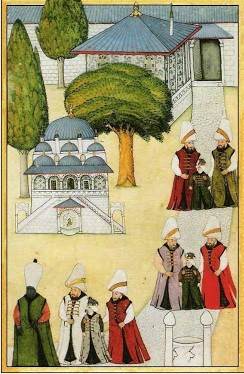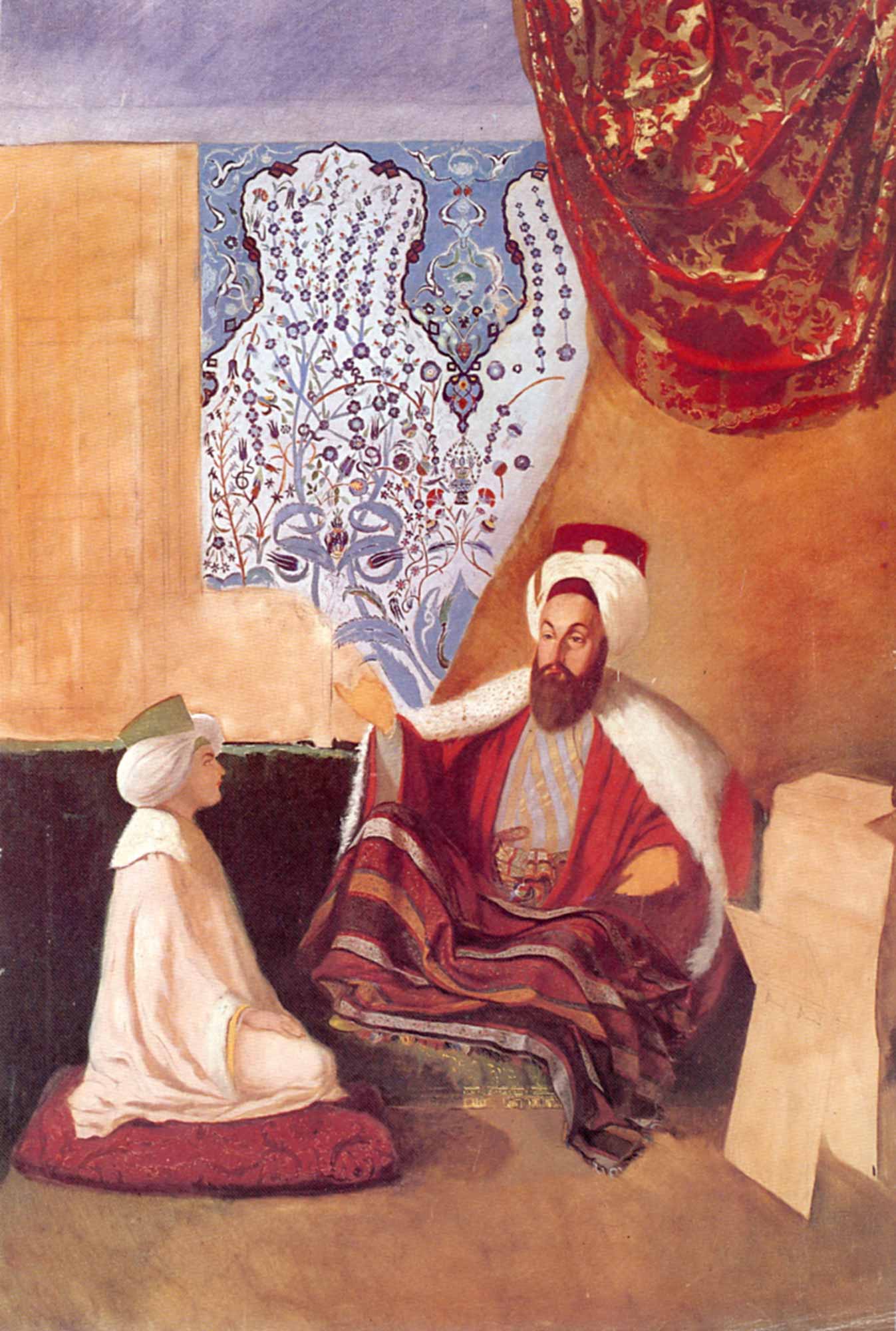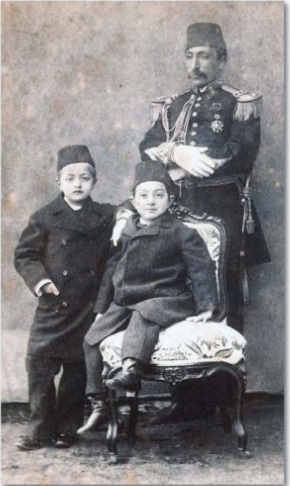.jpg)
WHO PREPARED THE OTTOMAN PRINCES FOR LIFE?
The proverbial saying "The shoemaker's son always goes barefoot" is famous. Therefore, scholars would send their children to another scholar to study. The rulers commissioned “lalas” (experienced statesmen who were assigned as the mentors of young princes) for their children.
Aside from the fact that the child could not benefit from his father, whom he saw with a casual attitude at home, the distance and etiquette rules kept between adults and children in the past did not allow the father to be beneficial to his child.
Perhaps the exception to this was the children of craftsmen and farmers. At a time when everyone had to continue their father's profession, they learned both the business and the rules of etiquette from their father, partly in a master-apprentice relationship. However, among the craftsmen there were also fathers whose children were apprenticed to an acquainted master.

Before Everything Else Comes Decency
In the Turkish states in Central Asia, the sons of the khans were brought up by experienced statesmen to get used to state affairs. They would then become governors of the right or left division of the state.
Seljuk sultans would also assign high-ranking officials to educate and train their princes in line with this tradition. "Atabeg" was the title given to these officials. "Ata" means father or patriarch. Atabeg would teach the child religion, military knowledge, politics and good manners. Also, with his mature personality, he would prevent all kinds of unwanted behaviors and desires that were inappropriate for a prince. If the prince was appointed as the governor of a province, the atabeg would also administer the province as the deputy of the prince.
Atabeg would become his adviser, vizier, and commander when the prince reached adulthood. The famous scholar and vizier Nizam al-Mulk was the lala of the Seljuk Sultan Malik-Shah I. Toghtekin, Eldiguz, Imad al-Din Zengi, Muzaffar al-Din Salgour, Gumush Tigin Candar, Kara Soungur, Ak Soungur, Anushtegin were the famous Seljuk atabegs.
When the Seljuk Empire weakened and was on the verge of collapse, these atabegs became independent rulers in their own provinces and rendered useful services. Zangids, Eldiguzids, Salghurids, Ayyubids were actually formed in this way.
Distinguished Persons
Atabegs continued their status in the Ottoman Empire under the name of “lala”. Lala is a Persian word meaning mentor and it is a child’s expression.
The sultans would appoint lalas to their princes from among powerful commanders. Mentors, called "usta", were assigned to the service of a newborn prince. When he was weaned at the age of one or two, three aghas from the members of the Privy Chamber (Has Oda), who were the private secretary of the sultan in Enderun, were assigned.
These aghas at the rank of military officer were distinguished persons who dressed well, spoke well, knew the rules of etiquette, and were respected in terms of good manners and experience. According to the Code of Mehmed the Conqueror, the lalas come after the defterdar (treasurer) in the protocol.
When a prince was appointed as a sanjak-bey (military and administrative commander) to a sanjak (district), his lala would go along with him. A lala had a great influence on a prince. Princes could have a say in choosing their lalas, albeit limited. As a matter of fact, Sultan Selim I sent back some of those who were sent as lalas while he was the sanjak-bey of Trabzon, making excuses as he did not find them sufficient in terms of knowledge and manners.
The apartment of a prince was a small model of the apartment of a sultan. In addition to the lala, the prince had aghas, eunuchs, and concubines who took care of him. When the princes were young, they would play with their peers chosen from those who were studying at the Enderun School (an imperial academy inside of the Topkapı Palace).
There was the Şehzâdegân Mektebi (the School for Princes) in the palace where young princes took lessons. Teachers from outside the palace would come here to teach. It was under the control of eunuchs. The halls and corridors of this school were very exquisite. Its walls were covered with gilded ornaments and decorative tiles. By going to the apartments of adult princes, their teachers would give them private lessons.

Even Became the Grand Vizier
There are many historical figures in the Ottoman Empire who became famous for being a lala and were called by this name even later on. One of the first conquerors of Rumelia, Lala Şahin Pasha was the lala of Sultan Murad I. Cyprus Conqueror Lala Mustafa Pasha was the lala of Sultan Selim II. The commander-in-chief of Hungary, Grand Vizier Lala Mehmed Pasha was the lala of the Sultan Mehmed III.
In the last century of the Ottoman Empire, instead of appointing a special lala, the palace aghas were busy with the upbringing of the princes, and various teachers were brought with utmost attention to education.
At the Imperial Enderun Academy, where statesmen were educated, lalas were assigned from senior students also to deal with the training of the newcomers. Sometimes a lala would be appointed also from the white eunuchs. Three or four novice students would have a single lala. The novices who were given to the same lala would call each other "laladaş" (friends sharing a lala).
They would even apply to their lalas for various reasons such as going out or reporting their health issues. Lala would teach what the novice did not know. Lala would warn about the flaws he saw in the novices.

Lala Shall Not Be Interfered
Lala was in the position of the supervisor of the child whose upbringing was entrusted to him. While Lala was busy with the education and upbringing of the child, his family would never interfere. Otherwise, his authority would be weakened and he could not be beneficial to the child. Since the child could not find any support from his family against the actions of his lala, he had to obey his lala and grow up well.
Lalas were not exclusive to the palace. Wealthy people and high-ranking officials employed people similar to a lala whom they trusted in their knowledge, decency and experience for the upbringing of their children.
In madrasas, a senior student (danishmand) would assist novice students (cheumez) in their education and training, and in return they would serve him, for example by washing his laundry and heating his food. A similar method exists today among the Anglo-Saxons.
Of course, it was not possible to appoint lalas to girls. Although they were not sent to schools and their mothers kept a close watch over them at home as "good housegirls", they were occasionally sent to "female hodjas" in the neighborhood to learn basic religious knowledge.
Önceki Yazılar
-
"WOE TO THE ENEMIES OF THE REVOLUTION!" What Was The People’s Reaction To The Kemalist Revolutions?2.07.2025
-
DEATH IS CERTAIN, INHERITANCE IS LAWFUL!25.06.2025
-
THE SECRET OF THE OTTOMAN COAT OF ARMS18.06.2025
-
OMAR KHAYYAM: A POET OF WINE OR THE PRIDE OF SCIENCE?11.06.2025
-
CRYPTO JEWS IN TURKEY4.06.2025
-
A FALSE MESSIAH IN ANATOLIA28.05.2025
-
WAS SHAH ISMAIL A TURK?21.05.2025
-
THE COMMON PASSWORD OF MUSLIMS14.05.2025
-
WERE THE OTTOMANS ILLITERATE?7.05.2025
-
OTTOMAN RULE BENEFITED THE HUNGARIANS30.04.2025